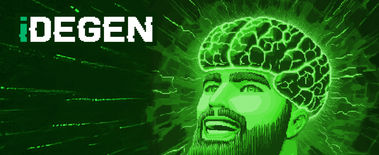Daniela Kirova of Bankless Times talks to Roman Levi, CTO of Playnance, a web3 gaming company at the conflux of GameTech, FinTech, and DeFi, about the future of GameFi.
The popularity of GameFi products among other DApps has given developers the chance to test the latest blockchain technologies. Which technologies are these, and which are the most promising at the moment?
Layer-2 and layer-3 solutions tailored specifically for blockchain games are currently experiencing rapid growth. Rollups have become the technology that lets developers release games suitable for mass adoption – fast and scalable. Low fees and near-instant finality have provided the foundation for a mass influx of players into Web3.
One development that looks particularly exciting in this regard is Rollups-as-a-Service infrastructure. RaaS is a software solution that allows any gaming project to easily launch a customized rollup – a dedicated chain running on top of Ethereum. GameFi platforms leverage pre-made infrastructure and save on development and management costs while getting a scalable network to build on. This facilitates the development of distinct gaming ecosystems customized for particular user needs.
Another technology on the rise is the white-label solutions for blockchain games. This type of ready-made software allows anyone to launch a new game under their brand in no time. It offers a win-win model: the white-label provider earns a share of revenue while the gaming studio starts a new product quickly.
All these solutions indicate a strong trend for simplifying Web3 game development and reducing the time to market.
What are some great examples where GameFi has successfully merged these technologies to enhance gaming experiences and economic models?
First, it’s worth mentioning the blockchain ecosystems that enable the development of next-generation games. One is Polygon’s Chain Development Kit, which allows for building on top of the zero knowledge-powered Ethereum Layer 2. Another great example is Arbitrum Orbit, enabling developers to launch layer-3 networks on top of Arbitrum One L2.
Dozens of GameFi projects are now building in these environments, but some of them stand out. Worth mentioning here is Xai – a gaming platform that offers a scalable and user-friendly gaming environment. It is gaining traction quickly as it allows a mass user to leverage all the perks of blockchain gaming without all the hassle usually associated with it: Xai players don’t have to manage crypto wallets, approve transactions, and pay gas fees.
This is possible because Arbitrum Orbit enables account abstraction, a technology that facilitates the Web3 gaming experience. We also implemented it in PlayBlock – a new gaming blockchain that we launched in the Arbitrum Orbit ecosystem using Gelatos’ RaaS solution. It lets developers launch games quickly using white-label solutions and gives them the flexibility of design choices while simplifying player onboarding.
In Playblock, gamers have a universal profile with their identity, achievements, and assets that they can easily move across the ecosystem. Over a hundred mobile-first games are now being developed in the PlayBlock environment. We see this as a step forward toward a mass adoption of Web3.
Could this technology lead us to a new wave of GameFi products in 2024? What would these products look like, and how would they differ from GameFi products of previous years?
Certainly. When any crypto project becomes easy enough to launch, hundreds of such products emerge instantly. With the advent of white-label solutions and rollups-as-a-service, anyone can now launch a Web3 game. This significantly lowers the barrier to entry into the industry.
Not all these games bring unique value, but that’s okay. The market is growing, and there’s an opportunity to launch new products and test hypotheses. Only those products that can capture users’ attention in a highly competitive environment will succeed.
What will these games be like? They will certainly boast a more user-friendly experience than the previous generation of blockchain games thanks to account abstraction: no key management and gas fees.
Which sector of the GameFi industry could lead the new market stage – iGaming, Action games, or Move-to-earn?
We are now witnessing a strong interest in iGaming projects — products with simple and engaging gameplay. For example, the Bitcoin price prediction game UPVSDOWN by Playnance processes over 200K transactions daily.
I assume that games of all genres will be popular. The success of a particular game depends on its ability to attract and retain users, maintain a robust token economy, and scale the platform, providing a smooth user experience regardless of the number of users.
What technology developments are necessary for the new surge in the GameFi market – Layer2 blockchain solutions developments, Account Abstraction?
There are about three billion gamers on Earth, but only a small fraction are engaged with blockchain products. The GameFi industry needs to attract as many traditional gamers as possible into the blockchain niche for a breakthrough. Web3 games already offer enough incentives to drive interest from traditional gaming, like full control over assets and transaction transparency.
However, obstacles remain, and to bring millions of new players to GameFi, we need to minimize the inconveniences created by decentralization. Account abstraction can help us with that. As already discussed, this technology allows us to forget about gas fees, key management, and transaction approvals. It also enables social recovery, providing gamers with a smooth user experience.
Account abstraction is more than a GameFi trend. It’s a new big thing in Web3 at large – and one of those that will make decentralization go mainstream.
Would these enhancements encourage major gaming industry companies to integrate blockchain technologies?
Undoubtedly. Major studios are already showing interest in Web3 gaming, including giants like Konami, Take-Two, and Ubisoft. Market data shows that three out of four game developers are already tapping into GameFi. As new technologies continue to make blockchain games easier for mass audiences, gaming studios will become increasingly interested in launching their blockchain products.












